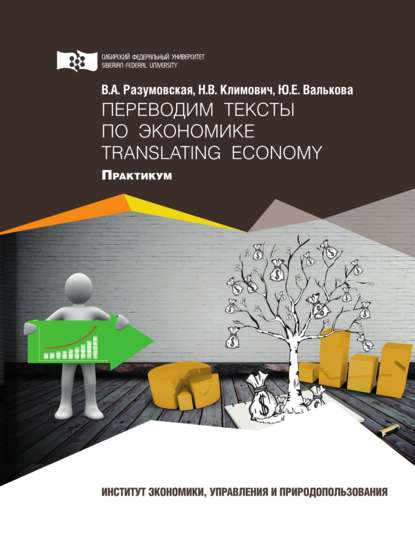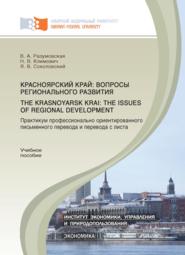По всем вопросам обращайтесь на: info@litportal.ru
(©) 2003-2024.
✖
Переводим тексты по экономике = Translating Economy
Год написания книги
2017
Настройки чтения
Размер шрифта
Высота строк
Поля
In adopting the skimming strategy the firm’s objective is to achieve an early break-even point and to maximize profits in a shorter time span or seek profits from a niche.
2) Penetration Pricing Strategies: as opposed to the skimming strategy, the objective of penetration price strategy is to gain a foothold in a highly competitive market. The objective of this strategy is market share or market penetration. Here, the firm prices its product lower than the others do in competition. Penetration pricing uses deliberate low prices to stimulate market growth and capture market share. It can be useful when there is a mass market and price sensitive customers. Japanese companies increasingly resort to penetrative pricing due to intense local competition.
This strategy delivers results in the following situations:
i) When the size of the market is large and it is a growing market.
ii) When customer loyalty is not high customers have been buying the existing brands more because of habit rather than any specific preferences for it.
iii) When the market is characterized by intensive competition.
iv) When the firm uses it as an entry strategy.
v) Where price-quality association is weak.
3) Differential Pricing Strategies: this strategy involves a firm differentiating its price across different market segments. The assumption in this strategy is that different market segments do not communicate or have different search costs and value perceptions of the product. In other words heterogeneity in the market motivates a firm to adopt this strategy.
4) Geographic Pricing Strategies: this strategy seeks to exploit economies of scale by pricing the product below the competitor’s in one market and adopting a penetration strategy in the other. The former is termed as second market discounting. This second market discounting is a part of the differential pricing strategy where the firm either dumps or sells below its cost in the market to utilize its existing surplus capacity. So, in geographic pricing strategy, a firm may charge a premium in one market, penetration price in another market and a discounted price in the third.
5) Product Line Pricing Strategies: these are a set of price strategies, which a multi-product firm can usefully adopt. An important fact to be noted is that these products have to be related, in other words belonging to the same product family. Faced with multi-products and fluctuating demand, the firm may adopt a combination of the following strategies to effectively manage its product line or maximize its profits across the product line.
i) Price Bundling: this strategy is used by a firm to even out the demand for its product. This is useful strategy for perishable; time-bound products like food, hotel room or a seat on a flight and for products cannot be substituted, like the package of stereo music system. Off-season discounts and, season tickets for music festivals are examples of price bundling strategy. This is a passive strategy aimed at correctly bundling the prices of related items so that the firm is able to maximize its profits.
ii) Premium Pricing: this strategy is used by a firm that has heterogeneity of demand for substitute products with joint economies of scale. Consider the example of a colour television set. There are different models available with different features, like the one with a remote control and another without it. Both are substitutable and satisfy the customer needs. But the firm may opt to premium price the first model and position it as the top of the product line for high income or upper income group of customers or for whom communicating that “they have arrived” is important.
iii) Image Pricing: this strategy is used when consumers infer quality from the prices of substitute models or competing products. The firm varies its prices over different brands of the same product line. This strategy is commonly used in textiles, cosmetics, toilet soaps and perfumes.
iv) Complementary Pricing: this strategy is used by a firm that has customers with high transaction costs for one or more of its products. Transaction costs are all those costs that a customer has to incur to buy the product, like the registration fees that a flat buyer has to pay in order to be a legal owner or the processing fees that the bank may charge to give a credit card to the customer.
v) Captive Pricing Strategy: here a special price deal is offered to loyal customers or those who are regularly buying one of the products of the firm. A typical example is the Gillette shaving system, which offers two twin blades free with its razor to induce the buyer to purchase its blades. Kodak adopted this strategy, when it offered a film roll free to all buyers who bought its camera. As may be observed this is a strategy aimed at building customer loyalty.
vi) Loss Leader Strategy: this is another example of complementary pricing strategy. This strategy involves dropping the price on a well-known brand to generate demand or traffic at the retail outlet.
vii) Two-Part Pricing: this strategy is used by products that can be divided into two distinct parts. For example, membership of a video library has two parts – one is the membership fee, which is annual and the other is rent for each time frame for which a videocassette is rented. As may be observed the price has two components, the fixed fees and the variables usage fees.
From:
http://www.yourarticlelibrary.com/marketing/factors-influencing-pricing-strategy-in-international-marketing/5800/
5. Explain (in the original language) the following words and expressions from the text:
6. Give a written translation of the text (or some part of it – in accordance with the teacher’s task) into Russian.
7. Work in the group of three. “Back- translate” orally your Russian translation of the text into English.
8. Find Russian equivalents to the following words and expressions:
Adj.+ price: exorbitant price, prohibitive price, steep price, bargain price, asking price, cost price, purchase price, admission price, commodity price.
Verb + price: command price, fetch price, push up price, go for price, slash price, mark down price, undercut price, quote sb. price, bring down price, range in price.
Price + verb: price soars, price skyrockets, price slumps.
Price + noun: price level, price range, price cut, price war, price tag, price list, price index.
9. Give a written translation of the following extracts from Russian into English:
1. Теневые цены, как полагают создатели экономических моделей, следовало бы установить в случае, когда потребители и производители могут учесть внешние издержки и соответствующую прибыль. По системе учета национального дохода рыночные цены – это цены, которые платит потребитель. Цены производителей, равные рыночным ценам минус косвенные налоги и плюс субсидии, соответствуют прямым издержкам.
2. С точки зрения покупателя, цена является мерой, определяющей интенсивность потребности, которую он может удовлетворить, приобретая данный товар. При этом в процессе ценообразования следует учитывать, что покупателя интересует не только и не столько розничная цена, сколько цена потребления – суммарные затраты на приобретение и использование товара с учетом длительности его использования.
3. Решения, принимаемые руководством фирмы в области ценообразования, относятся к наиболее сложным и ответственным, поскольку они способны не просто ухудшить показатели финансово-хозяйственной деятельности, но и привести предприятие к банкротству. Кроме этого ценовые решения могут иметь долговременные последствия для потребителей, дилеров, конкурентов, многие из которых сложно предвидеть и, соответственно, оперативно предотвратить нежелательные тенденции после их проявления.
4. Установление цен в условиях рынка состоит из нахождения такой цены, которая представляла бы собой оптимальный баланс между суммой, которую желал бы заплатить за товар покупатель, и затратами предприятия при его производстве. В процессе установления цены значение затрат не должно превышаться. Затратные методы, которые основаны на ориентации цены на издержки производства, являются одними из наиболее распространенных в ценообразовании. В общем виде их суть состоит в том, что к рассчитанной себестоимости единицы продукции добавляются фиксированный размер прибыли и косвенные налоги.
Вы ознакомились с фрагментом книги.
Приобретайте полный текст книги у нашего партнера:
Приобретайте полный текст книги у нашего партнера:








